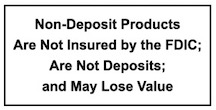Q. What is Texas Bank Internet Banking?
A. Banking through the Internet is a convenient way to view your account balances, and see your account history, view your check images. If you are already accessing the Web from your home or office, all you need to do is register for the service. You’ll have immediate access to your account information 24 hours a day, seven days a week.
Q. What about funds transfer and bill payment?
A. Texas Bank Internet Banking offers funds transfer capabilities. Bill payment is now available. For an application, contact a new accounts representative.
Q. Are all types of accounts accessible with the service?
A. You can access the following account information: Checking, Savings, Loans, Money Market, CDs, and IRAs
Q. How much does the service cost?
A. Texas Bank Internet Banking is free of monthly charges to all customers of Texas Bank. Of course, any fees you currently pay, related to accounts, will still apply.
Q. How do I register for the service?
A. Go to our Internet Banking page. It will provide you with instructions for registration.
Q. Can I use the service to access my Texas Bank Business Account?
A. Yes.
Q. What if I want to add a new Texas Bank account after I’ve already registered for the service, can I access information for my new account using the service?
A. Yes. To add a newly opened account to the service (or delete an account from the service), just contact us via phone, fax, or e-mail.
Q. Will I have access to my family members’ Texas Bank account information?
A. If you have an account you hold jointly with someone else, you will both be able to access information on that account when either one of you registers for the service. It is also possible to establish access to account information for an account you do not hold jointly with someone else (for example, a son or daughter away at college), but only with the written consent of that person. For additional information, please contact Texas Bank.
Internet Security
Q. Is the Internet a safe place for me to conduct my banking business?
A. Internet security receives a great deal of media attention, as it should. The most valuable characteristic of the Internet, convenient global access to information and services, also presents certain challenges with respect to the protection of individual and corporate privacy and assets. Texas Bank employs a combination of proven access control methods with state-of-the-art network security techniques to ensure the protection of your account information from unauthorized access.
Q. What can I do to ensure the continued security of my account information?
A. You can minimize risk to the privacy of your own account information by adopting the following habits:
- Change your Texas Bank Internet Banking password on a frequent basis
Never reveal your Texas Bank’s Internet user ID or password to anyone.
If you notice any suspicious or unusual activity related to any of your accounts, please notify Texas Bank immediately.
Q. When I Login to Internet Banking information with Texas Bank Internet Banking, can it be seen by anyone else?
A. No; because of our strict access security, your account information will only be accessible through the use of your Texas Bank Internet User ID and password.
Q. Is electronic mail (e-mail) secure enough to send a private message to Texas Bank?
A. Today, most e-mail messages travel “in the clear” (not encrypted), and can pass through multiple mail servers on route to the receiver, which means that there are numerous opportunities for an e-mail message’s contents to be intercepted and read by someone other than the intended recipient. For this reason, we recommend that you not send “private” information, such as account numbers, user IDs and passwords, via un-encrypted electronic mail. If you need assistance from Texas Bank that requires such information to be submitted to us, please contact us.
Problems Accessing Texas Bank Internet Banking
Q. When I try to access Texas Bank Internet Banking, nothing happens; or I get a message from my browser stating that the host did not respond (or the server was down, or the site could not be opened).
A. After attempting to contact a server computer, a browser will wait a “reasonable” period of time for a response. If a response is not received within that time period, it will “time out” and produce a message to the user stating that there must be a problem with the desired server. While it is possible that there is a problem with the server in this situation, there are many other potential reasons (for example, the server may not have ever received your message, due to a problem with your ISP, or with the routing of your message through the Internet). Whether the problem is encountered trying to access Texas Bank, or some other server on the World Wide Web, try again immediately to access the site in question. If the problem is persistent, try other sites; if most or all sites are inaccessible (indicating some kind of problem with your Internet service), call your ISP’s technical support service for assistance.
Note: If you are using Texas Bank Internet Banking from work, using Internet services provided through your employer’s LAN, you may need technical assistance from your LAN administrator rather than an ISP.

